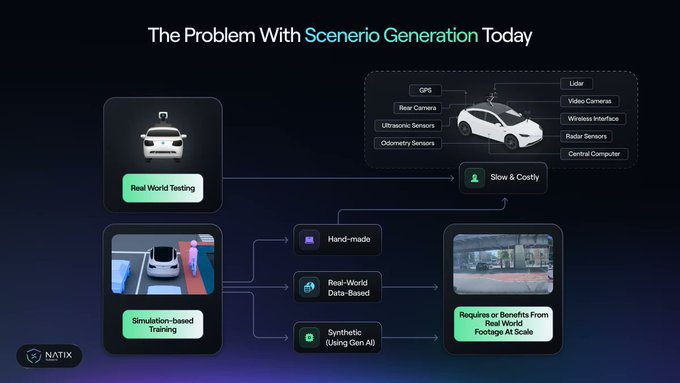The Complexities of Testing Autonomous Driving Systems
Testing the autonomous driving stack based on simulations of traffic scenarios can be a slow and costly process. Manual scenarios can take months to generate, while real-world scenario generation requires billions of miles driven. Simulations, on the other hand, need better data to be effective. This challenge is highlighted by the fact that autonomous vehicles face an endless variety of edge cases, depending on the location and situation.
Foretellix’s Innovative Approach
Foretellix, a company providing verification and validation solutions to test driver assistance and autonomous systems, has raised an extra $42M to build and test self-driving scenarios. Their unique selling proposition lies in the automated generation of unlimited scenarios based on industry standards to identify edge cases and ensure system reliability. This approach significantly reduces the time and cost associated with manual and real-world scenario generation. Foretellix’s solutions are particularly relevant for automotive OEMs, autonomous vehicle developers, and companies operating autonomous vehicles in closed-campus environments. More details can be found on Foretellix raises $85M to build and test scenarios for self-driving systems.
Off-Road Testing by Kodiak Robotics
Kodiak Robotics is taking a different approach by testing its self-driving trucks in unstructured, off-road environments. This method has provided a faster path to market than driving trucks on highways. In partnership with Atlas Energy Solutions, Kodiak plans to launch a fully driverless commercial trucking service by the end of 2024 or early 2025. This innovative approach allows Kodiak to validate its technology in challenging environments where HD maps are often unavailable, and conditions change rapidly. More information about Kodiak’s milestone can be found on Kodiak Robotics milestone.
Waabi’s Generative AI for Autonomous Driving
Waabi is leveraging generative AI to develop its self-driving technology. This approach allows Waabi to create scenarios to stress-test the Waabi Driver and teach it to learn from its mistakes without human intervention. Waabi’s technology promises to do much more than power self-driving trucks, with potential applications in robotaxis, humanoids, and warehouse robotics. This innovative approach has enabled Waabi to secure $200 million in Series B funding, bringing its total funding to $283.5 million. More details can be found on Waabi’s GenAI promises to do so much more than power self-driving trucks.
The Growing Role of AI in Autonomous Driving
AI in autonomous driving is becoming increasingly important as companies seek to improve the safety and reliability of their systems. The ability to generate realistic scenarios and learn from them is crucial for the development of autonomous vehicles. This trend is evident in the growing investment in AI-powered scenario generation and big data analytics. Companies like Foretellix, Kodiak Robotics, and Waabi are at the forefront of this innovation, leveraging AI to overcome the challenges of testing autonomous driving systems.
Related Articles
- The Evolution of AI: Moving Beyond Naive Scaling
- The Chatbot Conundrum: How to Do Testing on an AI Chatbot
- New Way of Traveling Together with Open AI eSIM
- 8 Sales Funnel Ideas for Maximizing AI Adoption
Looking for Travel Inspiration?
Explore Textify’s AI membership
Need a Chart? Explore the world’s largest Charts database
